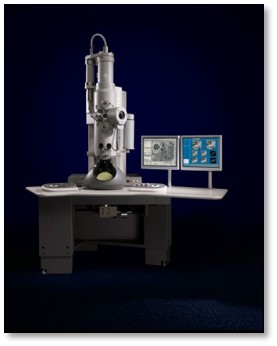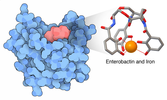+ Open data
Open data
- Basic information
Basic information
| Entry | Database: PDB / ID: 9ast | ||||||
|---|---|---|---|---|---|---|---|
| Title | Cryo-EM structure of XCR1 signaling complex | ||||||
 Components Components |
| ||||||
 Keywords Keywords | SIGNALING PROTEIN / GPCR / XCL1 / Membrane protein | ||||||
| Function / homology |  Function and homology information Function and homology informationmature natural killer cell chemotaxis / positive regulation of granzyme A production / negative regulation of T-helper 1 cell activation / positive regulation of immunoglobulin production in mucosal tissue / positive regulation of granzyme B production / positive regulation of thymocyte migration / positive regulation of B cell chemotaxis / negative regulation of T-helper 1 type immune response / negative regulation of T cell cytokine production / positive regulation of transforming growth factor beta production ...mature natural killer cell chemotaxis / positive regulation of granzyme A production / negative regulation of T-helper 1 cell activation / positive regulation of immunoglobulin production in mucosal tissue / positive regulation of granzyme B production / positive regulation of thymocyte migration / positive regulation of B cell chemotaxis / negative regulation of T-helper 1 type immune response / negative regulation of T cell cytokine production / positive regulation of transforming growth factor beta production / positive regulation of natural killer cell chemotaxis / chemokine receptor binding / positive regulation of T-helper 1 cell cytokine production / chemokine receptor activity / positive regulation of T cell chemotaxis / CCR chemokine receptor binding / positive regulation of T-helper 2 cell cytokine production / positive regulation of leukocyte chemotaxis / C-C chemokine receptor activity / negative regulation of CD4-positive, alpha-beta T cell proliferation / chemokine-mediated signaling pathway / positive regulation of CD4-positive, alpha-beta T cell proliferation / C-C chemokine binding / positive regulation of neutrophil chemotaxis / chemokine activity / Chemokine receptors bind chemokines / positive regulation of CD8-positive, alpha-beta T cell proliferation / negative regulation of interleukin-2 production / negative regulation of type II interferon production / positive regulation of interleukin-10 production / G protein-coupled receptor signaling pathway, coupled to cyclic nucleotide second messenger / cellular response to transforming growth factor beta stimulus / adenylate cyclase inhibitor activity / positive regulation of protein localization to cell cortex / T cell migration / Adenylate cyclase inhibitory pathway / D2 dopamine receptor binding / response to prostaglandin E / adenylate cyclase regulator activity / G protein-coupled serotonin receptor binding / release of sequestered calcium ion into cytosol / adenylate cyclase-inhibiting serotonin receptor signaling pathway / neutrophil chemotaxis / cellular response to interleukin-4 / cellular response to forskolin / regulation of mitotic spindle organization / positive regulation of release of sequestered calcium ion into cytosol / cell chemotaxis / Regulation of insulin secretion / calcium-mediated signaling / positive regulation of cholesterol biosynthetic process / negative regulation of insulin secretion / G protein-coupled receptor binding / response to peptide hormone / positive regulation of T cell cytokine production / adenylate cyclase-inhibiting G protein-coupled receptor signaling pathway / positive regulation of T cell mediated cytotoxicity / adenylate cyclase-modulating G protein-coupled receptor signaling pathway / response to virus / G-protein beta/gamma-subunit complex binding / centriolar satellite / Olfactory Signaling Pathway / Activation of the phototransduction cascade / G beta:gamma signalling through PLC beta / Presynaptic function of Kainate receptors / Thromboxane signalling through TP receptor / G protein-coupled acetylcholine receptor signaling pathway / Activation of G protein gated Potassium channels / Inhibition of voltage gated Ca2+ channels via Gbeta/gamma subunits / G-protein activation / chemotaxis / Prostacyclin signalling through prostacyclin receptor / G beta:gamma signalling through CDC42 / Glucagon signaling in metabolic regulation / G beta:gamma signalling through BTK / Synthesis, secretion, and inactivation of Glucagon-like Peptide-1 (GLP-1) / ADP signalling through P2Y purinoceptor 12 / photoreceptor disc membrane / antimicrobial humoral immune response mediated by antimicrobial peptide / Sensory perception of sweet, bitter, and umami (glutamate) taste / Glucagon-type ligand receptors / Adrenaline,noradrenaline inhibits insulin secretion / Vasopressin regulates renal water homeostasis via Aquaporins / GDP binding / Glucagon-like Peptide-1 (GLP1) regulates insulin secretion / G alpha (z) signalling events / cellular response to catecholamine stimulus / ADP signalling through P2Y purinoceptor 1 / ADORA2B mediated anti-inflammatory cytokines production / G beta:gamma signalling through PI3Kgamma / adenylate cyclase-activating dopamine receptor signaling pathway / Cooperation of PDCL (PhLP1) and TRiC/CCT in G-protein beta folding / GPER1 signaling / cell-cell signaling / Inactivation, recovery and regulation of the phototransduction cascade / cellular response to prostaglandin E stimulus / G-protein beta-subunit binding / heterotrimeric G-protein complex / G alpha (12/13) signalling events / sensory perception of taste Similarity search - Function | ||||||
| Biological species |  Homo sapiens (human) Homo sapiens (human) | ||||||
| Method | ELECTRON MICROSCOPY / single particle reconstruction / cryo EM / Resolution: 3.07 Å | ||||||
 Authors Authors | Zhang, X. / Zhang, C. | ||||||
| Funding support |  United States, 1items United States, 1items
| ||||||
 Citation Citation |  Journal: Proc Natl Acad Sci U S A / Year: 2024 Journal: Proc Natl Acad Sci U S A / Year: 2024Title: Molecular basis for chemokine recognition and activation of XCR1. Authors: Xuan Zhang / Roman R Schlimgen / Stephanie Singh / Michael P Tomani / Brian F Volkman / Cheng Zhang /  Abstract: The X-C motif chemokine receptor XCR1, which selectively binds to the chemokine XCL1, is highly expressed in conventional dendritic cells subtype 1 (cDC1s) and crucial for their activation. ...The X-C motif chemokine receptor XCR1, which selectively binds to the chemokine XCL1, is highly expressed in conventional dendritic cells subtype 1 (cDC1s) and crucial for their activation. Modulating XCR1 signaling in cDC1s could offer novel opportunities in cancer immunotherapy and vaccine development by enhancing the antigen presentation function of cDC1s. To investigate the molecular mechanism of XCL-induced XCR1 signaling, we determined a high-resolution structure of the human XCR1 and G complex with an engineered form of XCL1, XCL1 CC3, by cryoelectron microscopy. Through mutagenesis and structural analysis, we elucidated the molecular details for the binding of the N-terminal segment of XCL1 CC3, which is vital for activating XCR1. The unique arrangement within the XCL1 CC3 binding site confers specificity for XCL1 in XCR1. We propose an activation mechanism for XCR1 involving structural alterations of key residues at the bottom of the XCL1 binding pocket. These detailed insights into XCL1 CC3-XCR1 interaction and XCR1 activation pave the way for developing novel XCR1-targeted therapeutics. | ||||||
| History |
|
- Structure visualization
Structure visualization
| Structure viewer | Molecule:  Molmil Molmil Jmol/JSmol Jmol/JSmol |
|---|
- Downloads & links
Downloads & links
- Download
Download
| PDBx/mmCIF format |  9ast.cif.gz 9ast.cif.gz | 245.2 KB | Display |  PDBx/mmCIF format PDBx/mmCIF format |
|---|---|---|---|---|
| PDB format |  pdb9ast.ent.gz pdb9ast.ent.gz | 185.8 KB | Display |  PDB format PDB format |
| PDBx/mmJSON format |  9ast.json.gz 9ast.json.gz | Tree view |  PDBx/mmJSON format PDBx/mmJSON format | |
| Others |  Other downloads Other downloads |
-Validation report
| Summary document |  9ast_validation.pdf.gz 9ast_validation.pdf.gz | 1.1 MB | Display |  wwPDB validaton report wwPDB validaton report |
|---|---|---|---|---|
| Full document |  9ast_full_validation.pdf.gz 9ast_full_validation.pdf.gz | 1.1 MB | Display | |
| Data in XML |  9ast_validation.xml.gz 9ast_validation.xml.gz | 40.1 KB | Display | |
| Data in CIF |  9ast_validation.cif.gz 9ast_validation.cif.gz | 59.9 KB | Display | |
| Arichive directory |  https://data.pdbj.org/pub/pdb/validation_reports/as/9ast https://data.pdbj.org/pub/pdb/validation_reports/as/9ast ftp://data.pdbj.org/pub/pdb/validation_reports/as/9ast ftp://data.pdbj.org/pub/pdb/validation_reports/as/9ast | HTTPS FTP |
-Related structure data
| Related structure data |  43825MC M: map data used to model this data C: citing same article ( |
|---|---|
| Similar structure data | Similarity search - Function & homology  F&H Search F&H Search |
- Links
Links
- Assembly
Assembly
| Deposited unit | 
|
|---|---|
| 1 |
|
- Components
Components
-Guanine nucleotide-binding protein ... , 3 types, 3 molecules ABG
| #1: Protein | Mass: 40414.047 Da / Num. of mol.: 1 / Mutation: S47N, G203A, E245A, A326S Source method: isolated from a genetically manipulated source Source: (gene. exp.)  Homo sapiens (human) / Gene: GNAI1 / Production host: Homo sapiens (human) / Gene: GNAI1 / Production host:  |
|---|---|
| #4: Protein | Mass: 38744.371 Da / Num. of mol.: 1 Source method: isolated from a genetically manipulated source Source: (gene. exp.)  Homo sapiens (human) / Gene: GNB1 / Production host: Homo sapiens (human) / Gene: GNB1 / Production host:  |
| #5: Protein | Mass: 7859.173 Da / Num. of mol.: 1 Source method: isolated from a genetically manipulated source Source: (gene. exp.)  Homo sapiens (human) / Gene: GNG2 / Production host: Homo sapiens (human) / Gene: GNG2 / Production host:  |
-Protein , 2 types, 2 molecules LR
| #2: Protein | Mass: 13905.371 Da / Num. of mol.: 1 Source method: isolated from a genetically manipulated source Source: (gene. exp.)  Homo sapiens (human) / Gene: XCL1, LTN, SCYC1 / Production host: Homo sapiens (human) / Gene: XCL1, LTN, SCYC1 / Production host:  |
|---|---|
| #3: Protein | Mass: 60383.625 Da / Num. of mol.: 1 Source method: isolated from a genetically manipulated source Source: (gene. exp.)  Homo sapiens (human) / Gene: XCR1, CCXCR1, GPR5 / Production host: Homo sapiens (human) / Gene: XCR1, CCXCR1, GPR5 / Production host:  |
-Antibody , 1 types, 1 molecules E
| #6: Antibody | Mass: 28634.797 Da / Num. of mol.: 1 Source method: isolated from a genetically manipulated source Source: (gene. exp.)   |
|---|
-Details
| Has protein modification | Y |
|---|
-Experimental details
-Experiment
| Experiment | Method: ELECTRON MICROSCOPY |
|---|---|
| EM experiment | Aggregation state: PARTICLE / 3D reconstruction method: single particle reconstruction |
- Sample preparation
Sample preparation
| Component | Name: XCL1-XCR1-Gi complex / Type: COMPLEX / Entity ID: all / Source: RECOMBINANT |
|---|---|
| Molecular weight | Experimental value: NO |
| Source (natural) | Organism:  |
| Source (recombinant) | Organism:  Baculovirus expression vector pFastBac1-HM Baculovirus expression vector pFastBac1-HM |
| Buffer solution | pH: 7.5 |
| Specimen | Embedding applied: NO / Shadowing applied: NO / Staining applied: NO / Vitrification applied: YES |
| Vitrification | Cryogen name: ETHANE |
- Electron microscopy imaging
Electron microscopy imaging
| Experimental equipment |  Model: Tecnai Spirit / Image courtesy: FEI Company |
|---|---|
| Microscopy | Model: FEI TECNAI SPIRIT |
| Electron gun | Electron source:  FIELD EMISSION GUN / Accelerating voltage: 300 kV / Illumination mode: FLOOD BEAM FIELD EMISSION GUN / Accelerating voltage: 300 kV / Illumination mode: FLOOD BEAM |
| Electron lens | Mode: BRIGHT FIELD / Nominal defocus max: 2000 nm / Nominal defocus min: 1000 nm |
| Image recording | Electron dose: 55 e/Å2 / Film or detector model: GATAN K3 BIOQUANTUM (6k x 4k) |
- Processing
Processing
| CTF correction | Type: PHASE FLIPPING AND AMPLITUDE CORRECTION |
|---|---|
| 3D reconstruction | Resolution: 3.07 Å / Resolution method: FSC 0.143 CUT-OFF / Num. of particles: 255110 / Symmetry type: POINT |
 Movie
Movie Controller
Controller



 PDBj
PDBj































